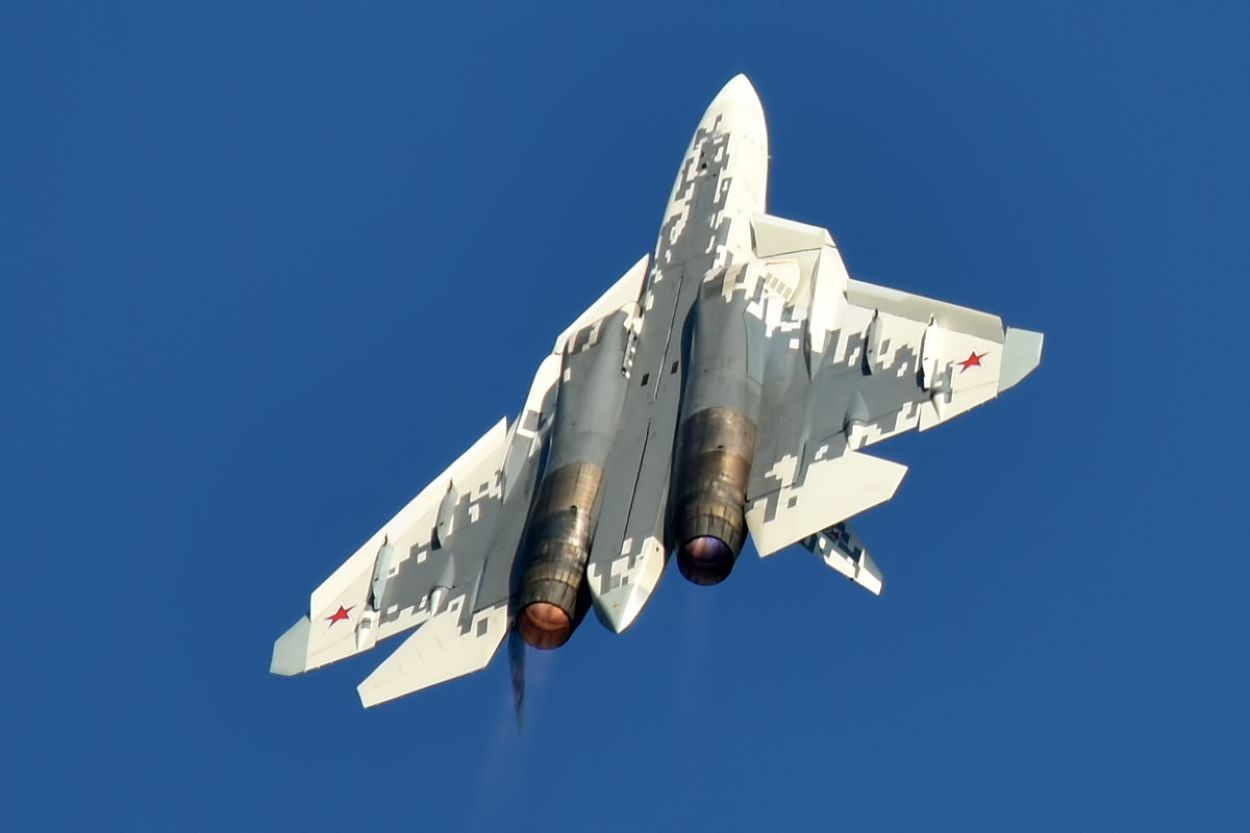Russia’s massive offensive is about to shape in the east, amassing its military aircraft, including its Su-57 Generation 5 fighters, for a final blow, Western military, and diplomatic officials have noted.
The intense and relentless action towards Kupyansk, Krasniy Liman, Donetsk, and south Donetsk has been perceived to be a precursor towards the finishing blow as the war nears its first anniversary on February 24.
Whether the accumulation of aircraft is a coercive measure to overwhelm and frighten the Ukrainian leadership or will actually translate into a sweeping land and air attack to take the targeted territory remains to be seen.
It is nevertheless clear that Russia does not want the conflict to drag on since the West has caught on to its ‘Long War’ concept by continuing to arm Ukraine. Long wars do not mean indefinite wars, especially those with set political objectives.
The Su-57, which was revealed to have been used in Ukraine by RIA Novosti in a June 2022 Suppression of Enemy Air Defense/Destruction of Enemy Air Defense (SEAD/DEAD) operation safely from within Russian territory, suggests how it also might be used in case of such an offensive.
Not To Be Used Regularly
Being its most advanced fighter, Russia is unlikely to fly it within Ukrainian airspace, where it might become a target for Western surface-to-air missile (SAM) systems.
These are the National Advanced Surface-to-Air Missile System (NASAMS), the German IRIS-T, and powerful Soviet-origin S-300 and Buk defense systems.
A British Ministry of Defense (MoD) update from January said Russia fears “reputational damage, reduced export prospects and the compromise of sensitive technology which would come from any loss of the Su-57 Felon over Ukraine.”
The June 2022 operation that was meant to “identify and destroy Ukrainian air defense systems using a flight of four Su-57 fighters” “(combined) the aircraft in a single information space (that increased) the efficiency of identifying and hitting targets.”
The quartet was “linked to a single information network to destroy air defense systems through automatic communication systems, data transmission, navigation and identification in real-time.”
A subsequent report in TASS about the Su-57s receiving what read like an Artificial Intelligence-Machine Learning (AI-ML)-enabled sensor fusion and data-linking was a logical next step in the fighter’s evolution.
The device offered “intelligent support to help the pilot decide under time pressure (and) help pilots in a pair (to) quickly interact (for tactical) tasks (like) target distribution, choosing an attack trajectory, determining the moment of the missile launch and the moments of applying interference to an enemy fighter.”

Su-57 Missions Have Been For Testing AI Networking Systems, Tactics
The MoD assessment added that the Su-57 missions have been “limited to flying over Russian territory, launching long-range air-to-surface air-to-air missiles into Ukraine.”
The MoD cited a December 25 satellite image on January 9 that showed five Felons in southern Russia’s Akhtubinsk air base, home to the 929th Flight Test Centre. Whether the aircraft are still present at the base is unknown, but the UK MoD is right in concluding that Russia will not employ it in routine operations.
This is particularly true given the fact that the war has been less characterized by airpower, featuring heavy air-to-air combat, regular bombing, and air dominance operations. Its highlights have been air denial, a grinding ground campaign, mechanized warfare, artillery duels, long-range missile strikes, and drone attacks.
Russia’s Su-35S, Su-30SM2, and MiG-35 are not only sufficient for the little air superiority and combat air patrol (CAP) missions but also to take on Western jets like the Eurofighter Typhoon, F-16, F-15, and possibly the F-35.
Russia would therefore press the Su-57 into service only when it clashes with North Atlantic Treaty Organization (NATO) fighters.

Long-Range Missile Attacks
The Su-57s will also not be used singularly, as coordinated parallel ground offensives will transpire simultaneously. It has two large internal weapon bays mounted in tandem between the engines and two side bays for short-range air-to-air missiles.
The ten internal and six external hardpoints can carry R-74M Archer and R-77M Adder air-to-air missile (AAM); Kh-38M air-to-surface missiles; Kh-31AD and Kh-35U anti-ship missiles and; Kh-31PD and Kh-58UShK anti-radiation missiles.
If the Russian offensive does happen, we can expect the Su-57s to be used in long-range standoff fires on the ground or aerial targets on Ukrainian air defense systems and major military command and control structures over the next few days.
However, this information too might be available only after several weeks, if not months, like the report about the June 2022 SEAD/DEAD mission.
But given the fact that Moscow’s interest lies in capturing the east and the south where infantry, tank, and artillery battles are taking place and has indicated no inclination towards western Ukraine or the capital Kyiv, there is little reason for the Voenno-vozdushnye sily Rossii (VVS or the Russian Air Force) to use the Su-57.
The June 2022 operation appears purely for testing purposes, meant to validate systems and refine tactics.
- The author can be reached at satamp@gmail.com
- Follow EurAsian Times on Google News




